The Casa das Histórias de Salvador reveals the city’s Nature, Territory, and Culture through different layers of people and stories, not always visible. Conceived as a Heritage Interpretation Center, the CHS will promote an unprecedented, sensitive, and poetic immersive experience capable of provoking your senses and inviting you to make your own connections with the city. Get ready to experience the history of Salvador in an entirely new way!
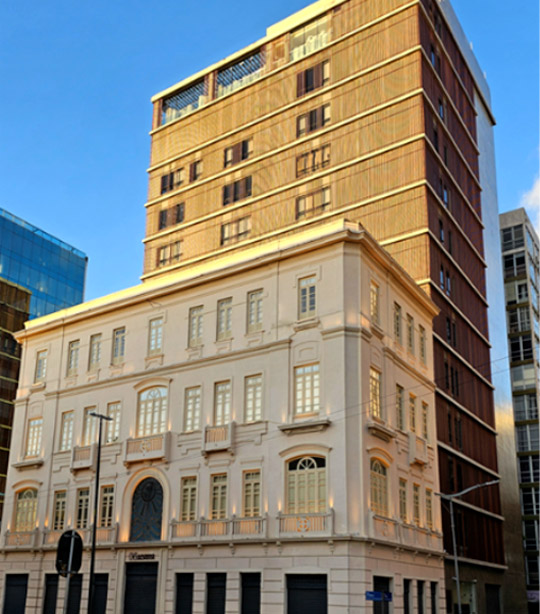
A new building has been specially designed and erected to house one of the largest documentary collections in the Americas. The Public Archives of Salvador is now (re)organized, restored, and digitized. Open to visitors and public consultations, this treasure trove safely reveals the memory of the first capital of Brazil.
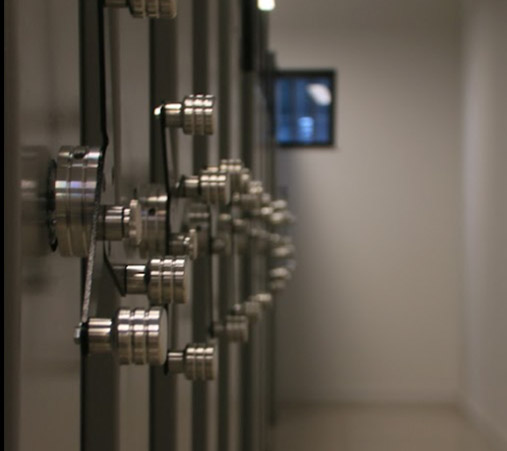

2 Bélgica Street – Comércio
Salvador – BA | CEP: 40010-030
Opening hours:
Open Tuesday to Sunday, from 10 a.m. to 18 p.m. (entrance until 17 p.m.)

NATURE
The first floor of Casa das Histórias de Salvador invites us to reflect on the complex relationship between nature, human action, societal impacts, and heritage preservation. The immersive experience (Re)lendo Paisagens [(Re)Reading Landscapes] not only offers an innovative, poetic, and artistic interpretation of Salvador but also works as the gateway for visitors to discover natural elements and landscapes that can broaden their perceptions of the city.
The floor also brings the exhibition De Kirimurê [From Kirimurê] to Casa das Histórias de Salvador, which shows the historical advance of the territory comprised by the Comércio [Trade] region over Kirimurê, the Great Sea, today Baía de Todos os Santos [Bay of All Saints], one of the symbols of Salvador’s identity. Landscapes can be transformed, built, (re)built by the needs, discoveries, and technologies of a society.
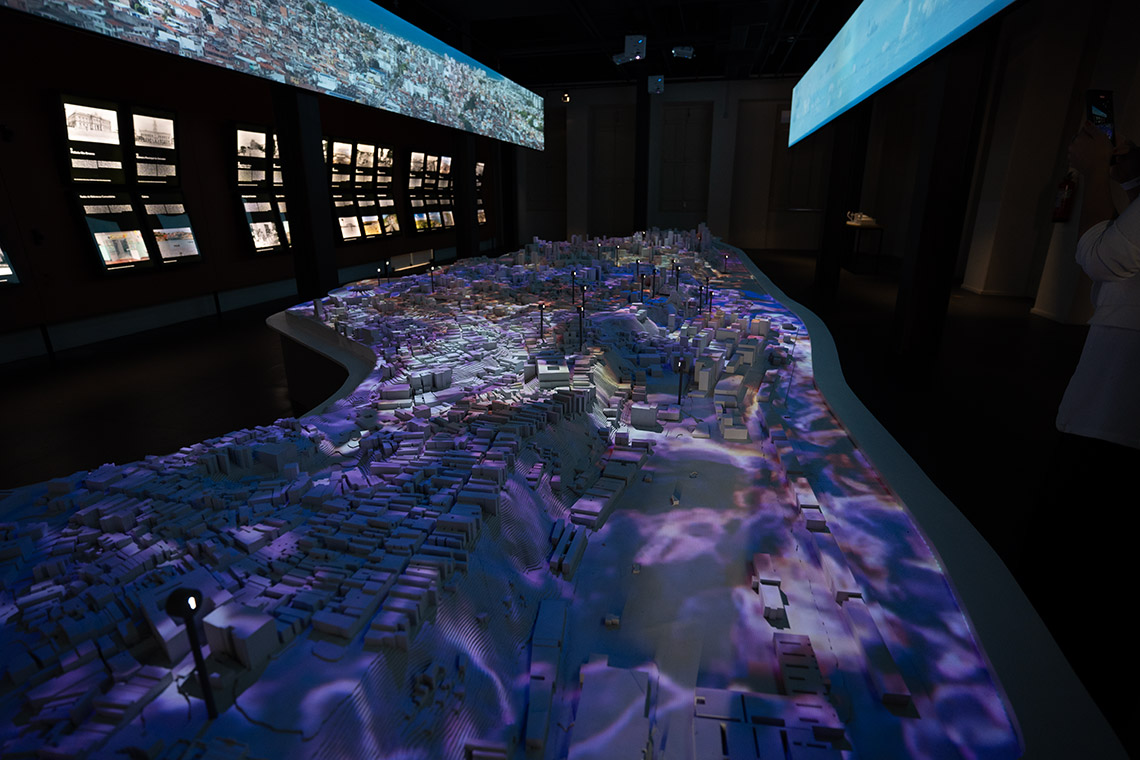
TERRITORY
The model presented in the space is not a faithful reproduction of Salvador but a volumetric representation that invites us to reflect on the many stories that the cultural heritage of Salvador tells us. Buildings or public spaces show how many layers of experience there are in each one. In the dialog between the volumetric model, moving images, and expanded territory, a kind of imaginary, affective, and symbolic cartography of the city is created, open to many other connections and interpretations for the visitor to make, either in this space of experience or while walking through the streets of Salvador. This floor, also integrated with the other levels, aims to bring closer and share with visitors routes and possibilities to experience, recognize, and interpret the city’s heritage, whether material or immaterial.
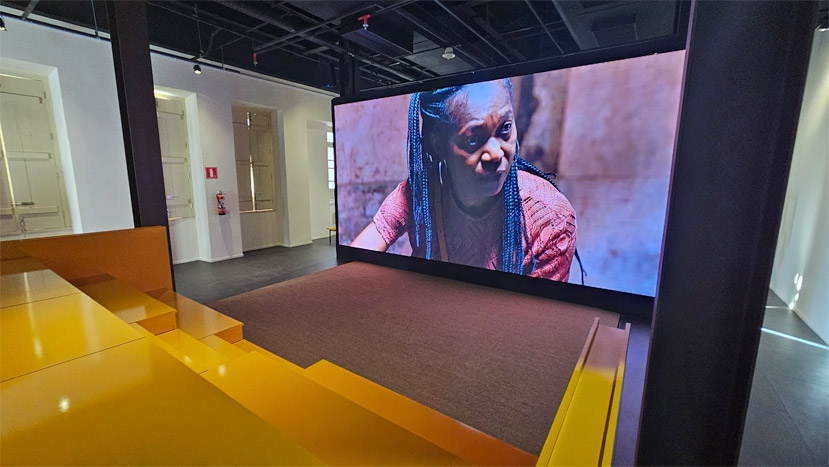
CULTURE
Living in the city means experiencing customs, beliefs, interpersonal and collective relationships, forms of knowledge transmission, as well as living in the present, shaping the future, and dialoguing with ancestry. The central square on this floor is a reference to the public, collective, and communal space where cultural manifestations occur. There, the audiovisual piece Trançando Festas [Weaving Festivities] takes place, bringing together recorded footage and images from various archives and presenting a narrative woven by festivities that braid together religious and secular elements.
If the square offers a collective practice around it, the installation Revelando Histórias [Revealing Stories] is individual and intimate, inviting the visitor to see a set of 24 portraits and unique accounts of individual experiences in the city of Salvador. By sharing their perceptions, people not only preserve their own heritage but also collaborate to construct a collective narrative that reflects the uniqueness of Salvador.
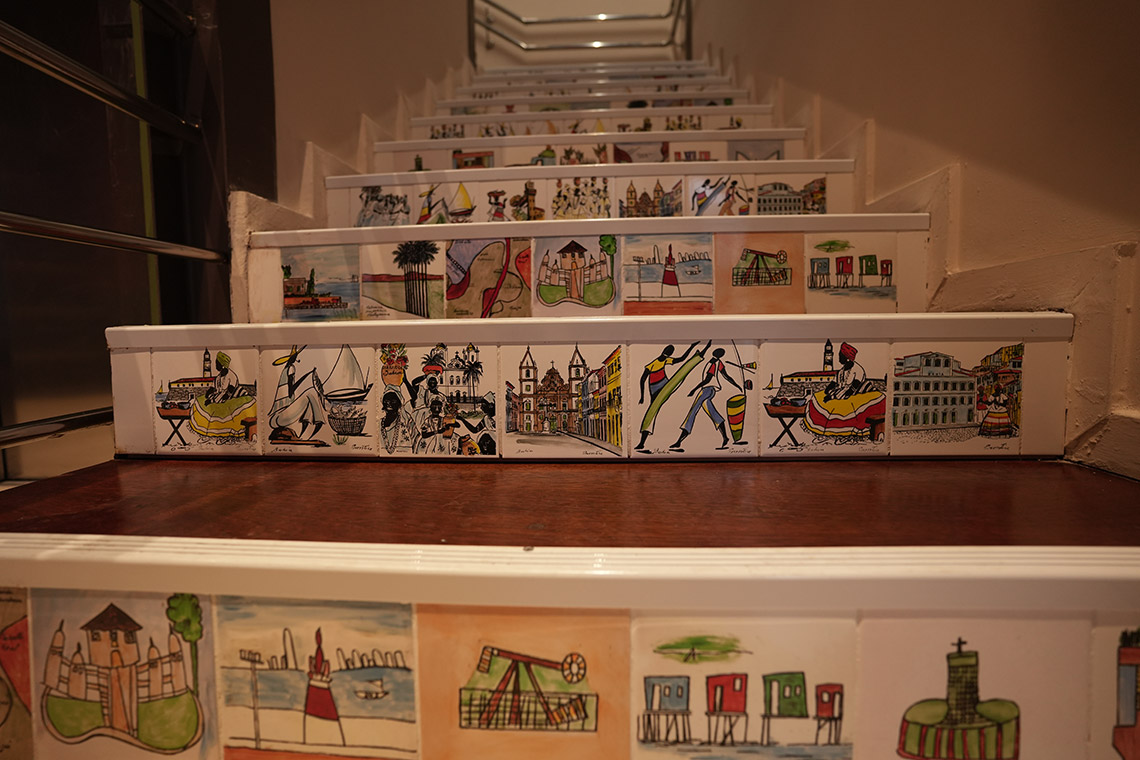
The stairs in Casa das Histórias de Salvador are more than just a technical solution to connect floors. The steps have become an exhibition space, where visitors will have contact with images painted on tiles, which create relationships between their memories and the natural and urban landscapes, monuments, and cultural manifestations present in the city’s daily life. Images of the Subúrbio Ferroviário [Railway Suburb], created by José Eduardo Ferreira Santos, and scenes of cultural events by the tile artist Prentice come together and take on new meanings when combined with the sonorities of Salvador.